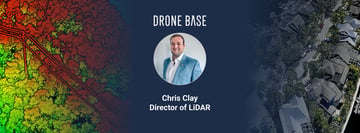There’s a lot of hype around drone delivery and the futuristic notion of personal transport drones. Both seemed restricted to science fiction not too long ago, but have developed into feasible options as we shape the way things and people will get from one place to another in the years to come.
Amazon, Google, Flytrex, Zipline, Uber, UPS, Ehang, DHL, Volocopter and Matternet are just some of the startups and industry giants positioning themselves at the forefront of the mobility revolution.
But in between an aerial delivery of the latest Blu-ray and an on-demand service that could fly above the traffic and whisk you to work, there’s a related application growing in interest and potential: autonomous cargo drones.
Medical drone deliveries have been granted regulatory leeway and use cases have come to fruition more quickly as a result. Autonomous cargo drones could also be fast-tracked into real-world action because of the technology’s potentially life-saving applications.
In the past few months, three US companies, Bell, Boeing and Elroy Air, have released test footage of their futuristic cargo drones.
Elroy Air’s 1,200 lb Chaparral, above, is being developed to be not just a heavy-duty delivery drone, but an end-to-end cargo delivery platform. The plan is for it to fly a 250-500lbs (100-225kg) payload a distance of around 300 miles (500km).
Textron subsidiary Bell is working on a series of cargo drones. The APT 70, below, can fly at 100mph with a payload capability of 70 lbs.
The CAV, below, is currently under development at Boeing NeXt. It’s yet another electric vertical takeoff and landing (eVTOL) drone in the testing phase. The CAV is designed to carry a payload up to 500 pounds (227 kilograms). The company wants to open up possibilities for safely and efficiently transporting goods in a number of industries.
All three drones offer a glimpse at the future of cargo.
The Applications of Autonomous Cargo
There are a few obvious applications of larger drones like this.
From a military perspective, it’s easy to see the appeal of a machine that can take equipment and supplies from one location to another without ever putting service personnel at risk. These drones could operate in conflict areas, without fatigue, pressure or human error ever coming into the equation.
From a commercial perspective, you can imagine this kind of drone transporting loads between warehouses or acting as an emergency courier service. Anything that automates the transport of goods from one location to another is going to be of interest to major corporations.
One of the most exciting prospects of the technology is in the field of humanitarian aid. Cargo drones like Elroy Air’s Chaparral could be pre-deployed to at-risk areas, or a fleet could provide round the clock supplies once a disaster has hit.
The potential increases when you combine autonomous flight and payload transport with other emerging technologies. The Chaparral, for example, is being developed to work alongside a robotic loading and unloading system, removing the need for boots on the ground and expediting the setup process - even in challenging locations.
Want to read more about the promise of drones in the logistics industry? Check out our blog on the progress of drone delivery.





